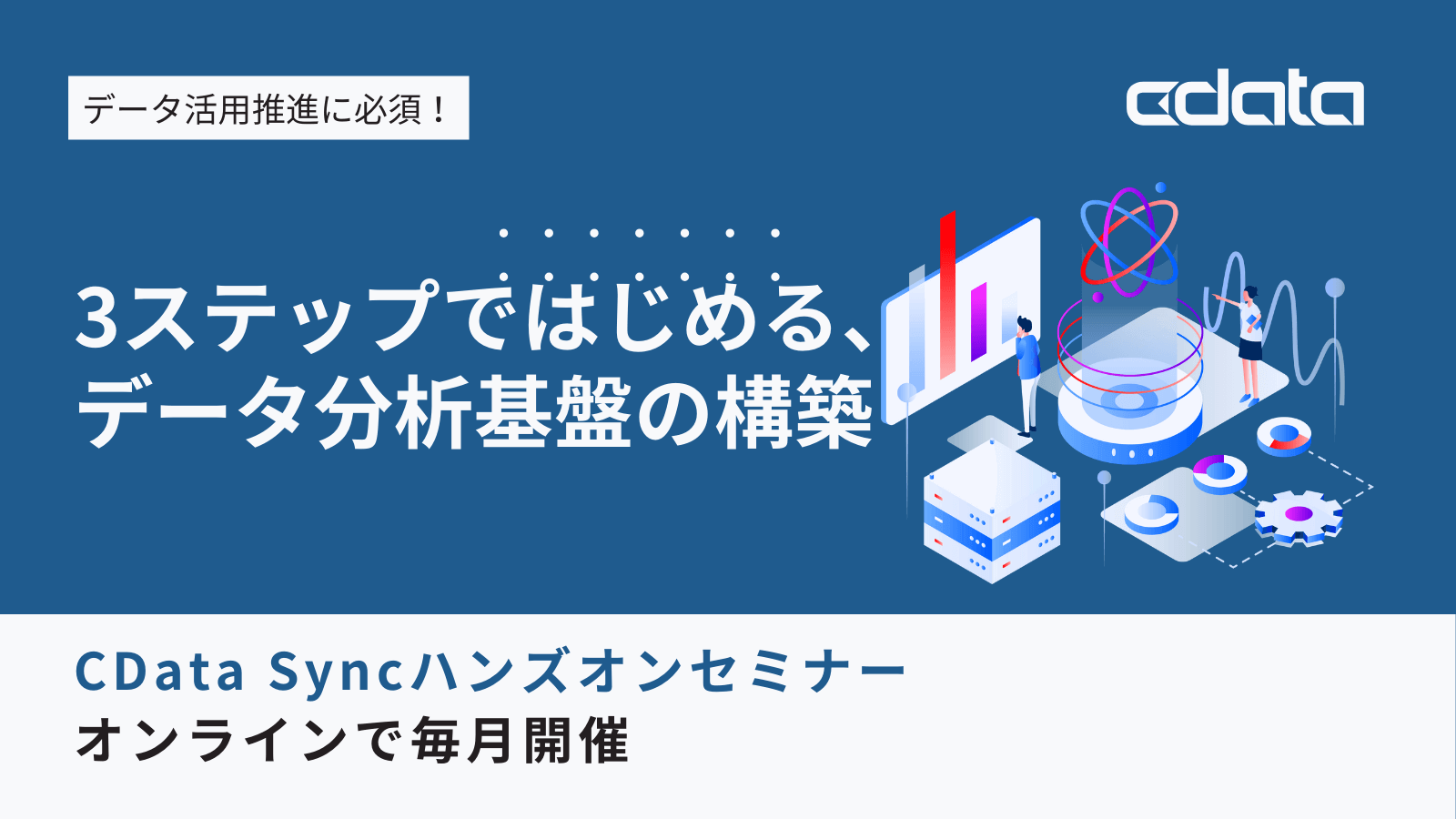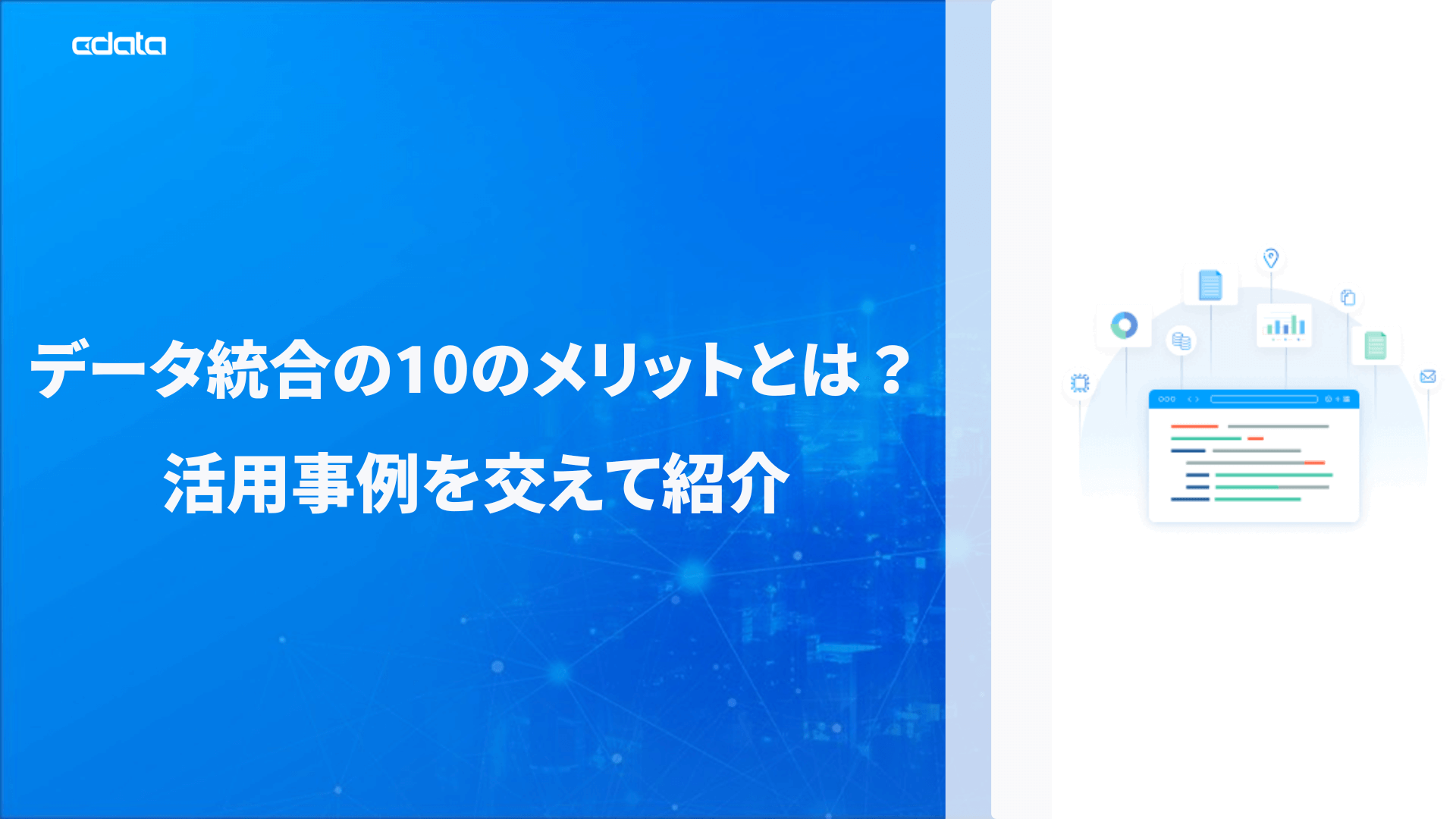ノーコードでクラウド上のデータとの連携を実現。
詳細はこちら →CData Software Japan - ナレッジベース
Latest Articles
- MySQL のデータをノーコードでREST API として公開する方法:CData API Server
- CData Sync AMI をAmazon Web Services(AWS)で起動
- Connect Cloud Guide: Derived Views, Saved Queries, and Custom Reports
- Connect Cloud Guide: SSO (Single Sign-On) and User-Defined Credentials
- Connect Cloud クイックスタート
- Shopify APIのバージョンアップに伴う弊社製品の対応について
Latest KB Entries
- DBAmp: Serial Number Expiration Date Shows 1999 or Expired
- CData Drivers のライセンスについて
- Spring4Shell に関する概要
- Update Required: HubSpot Connectivity
- CData Sync で差分更新を設定
- Apache Log4j2 Overview
ODBC Drivers
- [ article ] Linux 上でSurveyMonkey データに接続するGo アプリケーションを作成する方法
- [ article ] TIBCO Spotfire から、ODBC 経由でFreshdesk ...
- [ article ] Ruby でOracle Financials Cloud データ連携アプリを構築
- [ article ] Linux/UNIX 上のPython からSalesforce データにデータ連携
JDBC Drivers
- [ article ] Spotfire Server から Azure DevOps Operational ...
- [ article ] TSheets データをDataiku DSS にロードして分析処理を行う方法:CData JDBC ...
- [ article ] FileMaker Pro からHBase データへの双方向アクセス
- [ article ] Mule アプリケーションからLinkedIn Ads データにアクセス:CData JDBC ...
SSIS Components
- [ article ] Microsoft Project をSSIS 経由でSQL サーバーにバックアップする
- [ article ] SAP Fieldglass データからSQL Server ...
- [ article ] SuiteCRM データからSQL Server ...
- [ article ] Azure Synapse をSSIS 経由でSQL サーバーにバックアップする
ADO.NET Providers
- [ article ] Elasticsearch へLogstash 経由でAdobe Commerce ...
- [ article ] Visual Studio でチャートコントロールと SAP Netweaver Gateway ...
- [ article ] SSAS でBusiness b-ridge データに連携するOLAP Cube を作成
- [ article ] FreshBooks をSSIS 経由でSQL サーバーにバックアップする
Excel Add-Ins
- [ article ] CDATAQUERY 関数を使って、Excel スプレッドシートにAirtable を自動挿入
- [ article ] Microsoft Power Query からInstagram データに連携してExcel ...
- [ article ] Mac OS X 上のMS Excel でActive Directory データを連携利用
- [ article ] Microsoft Access へのExcel データのETL/ELT ...
API Server
- [ article ] ソフトウェア開発ツールMZ Platform でOData データと連携
- [ article ] MicroStrategy Web でOData ODBC Driver を使用
- [ article ] ローコード開発・運用プラットフォームMendix でOData に連携したアプリを作成する
- [ article ] Crystal Reports にOData を連携してOData データを使った帳票を作成
Data Sync
- [ article ] Google BigQuery へのPonparemall データのETL/ELT ...
- [ article ] Oracle データベースへのDB2 データのETL/ELT ...
- [ article ] SQLite へのSlack データのETL/ELT パイプラインを作ってデータを統合する方法
- [ article ] Azure Data Lake へのOracle Financials Cloud ...
Windows PowerShell
- [ article ] PowerShell からBasecamp データに接続してデータの更新・挿入・削除を実行する方法
- [ article ] PowerShell からYahoo! JAPAN DATA SOLUTION ...
- [ article ] PowerShell を使ってVeeva データをSQL Server にレプリケーション
- [ article ] Sybase データをPowerShell でMySQL にレプリケーションする方法
FireDAC Components
- [ article ] Delphi のSage 300 データへのデータバインドコントロール
- [ article ] Delphi のBlackbaud FE NXT データへのデータバインドコントロール
- [ article ] Delphi のEnterpriseDB データへのデータバインドコントロール
- [ article ] Delphi のHubSpot データへのデータバインドコントロール






